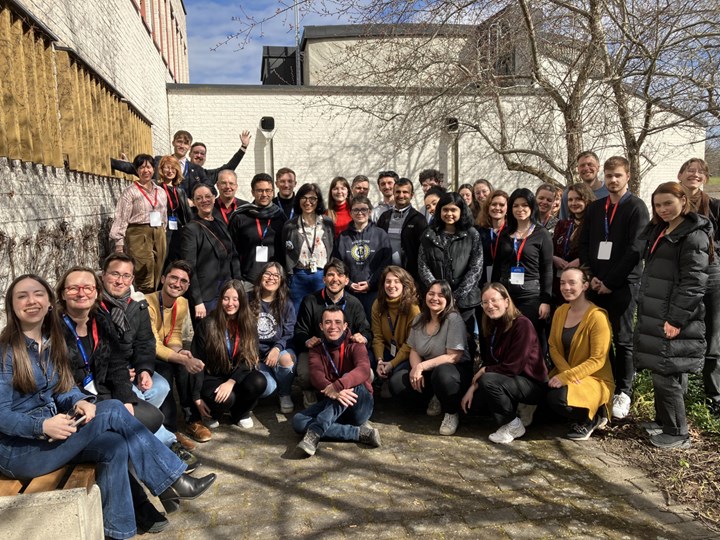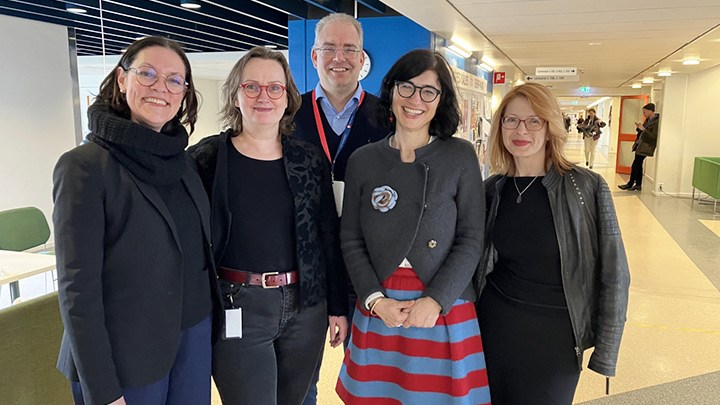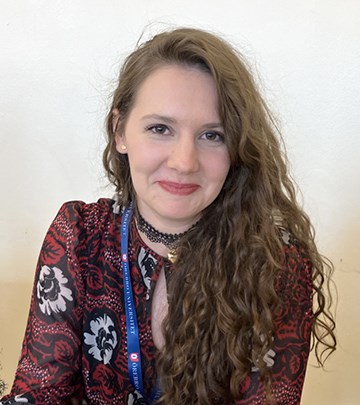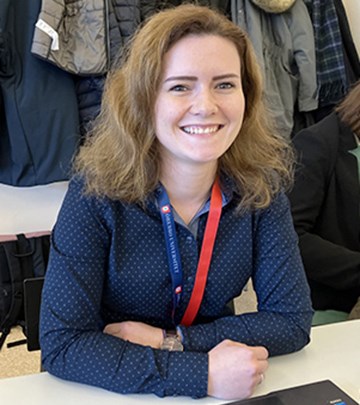International course in history attracting students to Örebro

Here are the course’s teachers and 40 international students from Germany, Spain, the Czech Republic, and France.
“Nearly 40 international students were in Örebro to take the course on historical narratives in Europe – a collaboration between four NEOLAiA universities, coordinated by Örebro University.”
“It was a fantastic experience meeting new colleagues and sharing our thoughts on how we write about and analyse history today,” says Josué García Veiga, doctoral student from Bielefeld University in Germany.
The history course “From National to Global Dynamics: Deconstructing Historical Narratives in 19th and 20th Century Europe” is a collaboration between Örebro University and three other NEOLAiA universities: Bielefeld University, University of Ostrava, and University of Tours. It is offered at the master’s level (second cycle) and is a Blended Intensive Programme (BIP), combining digital learning with on-site studies in a European country.
“We had hoped to attract a few history students but were not prepared for such great interest – a positive surprise,” says Izabela Dahl, senior lecturer in history at Örebro University and course coordinator.
International perspectives
Two years ago, the idea of starting joint master’s courses in history was conceived. Since then, historians from the four collaborating universities have worked on designing the course, which will add an international dimension since historiography, the writing of history, often occurs within a national perspective.
“In Örebro, students have worked with texts written by historians from Germany, France, and Sweden. The historical text from Sweden addressed depictions of Charles XII and the Age of Liberty. Students have also touched on Czech political history.”
“The course is about deconstructing national narratives and going beyond them, which is very relevant to my research and the reason I applied for the course,” says Josué García Veiga.
“The content was fascinating and allowed me to expand my knowledge of historiography and new methods related to it. During the week in Örebro, I met new colleagues from other countries and different disciplines, which was very inspiring,” says Kateřina Lančová, doctoral student in history at the University of Ostrava.
After a week in Örebro, the course concluded with a discussion on the emergence of increased European cooperation after World War II. Students also visited Alfred Nobel’s home in Karlskoga.
“The week in Örebro exceeded our expectations. The students were keen on the course and worked brilliantly in their groups,” says Patrik Winton, head of subject and one of the course’s teachers.

Next course session in Tours, France
Due to the great interest in the course, work is already underway to plan the next session. The four NEOLAiA universities will take turns organising the course, and Tours will be next. There are also plans to offer a BIP course in history didactics to be held in Ostrava.
“I’m so glad that we’ve managed to establish a new form of teaching within the subject of history. We gathered feedback from the students and will see how we can make the course even better,” says Izabela Dahl.
What challenges have you faced in planning the course?
“It’s been a challenge to meet all the requirements and learning outcomes linked to both the master’s level and the doctoral level in the various countries. Additionally, we come from different teaching cultures – and our teaching team has worked hard to find a unified approach in implementing the course,” says Izabela Dahl.
What did you get out of the course?

“Confirmation that even if our methods and ways of thinking may differ from our colleagues in Germany, Spain, France, and Sweden, these are equally effective,” says Gabriela Škorníková, doctoral student in history at Ostrava University.

“I’ve gained new knowledge about the subject and methodologies important in studying history and connections with people from universities in Sweden, Spain, France, and Germany. And not the least, inspiration from Örebro University and memories from our trip in Sweden,” says Kateřina Lančová, doctoral student in history at the University of Ostrava.
About Blended Intensive Programmes within NEOLAiA
BIP stands for Blended Intensive Programmes, a new format for Erasmus+ mobility that combines digital learning with on-site teaching.
The course “From National to Global Dynamics: Deconstructing Historical Narratives in 19th and 20th Century Europe” attracted 40 international students from Germany, Spain, the Czech Republic, and France.
BIP courses must be offered in collaboration with at least two other European universities. The courses must also combine both on-site and online teaching. Teachers interested in learning more about or organising BIP can contact Pia Bro-Nygårdhs, project manager for internationalisation, at the Executive Office, Pia.Bro-Nygardhs@oru.se.
Text: Jasenka Dobric
Photo: Ingela Abramsson
Translation: Jerry Gray
